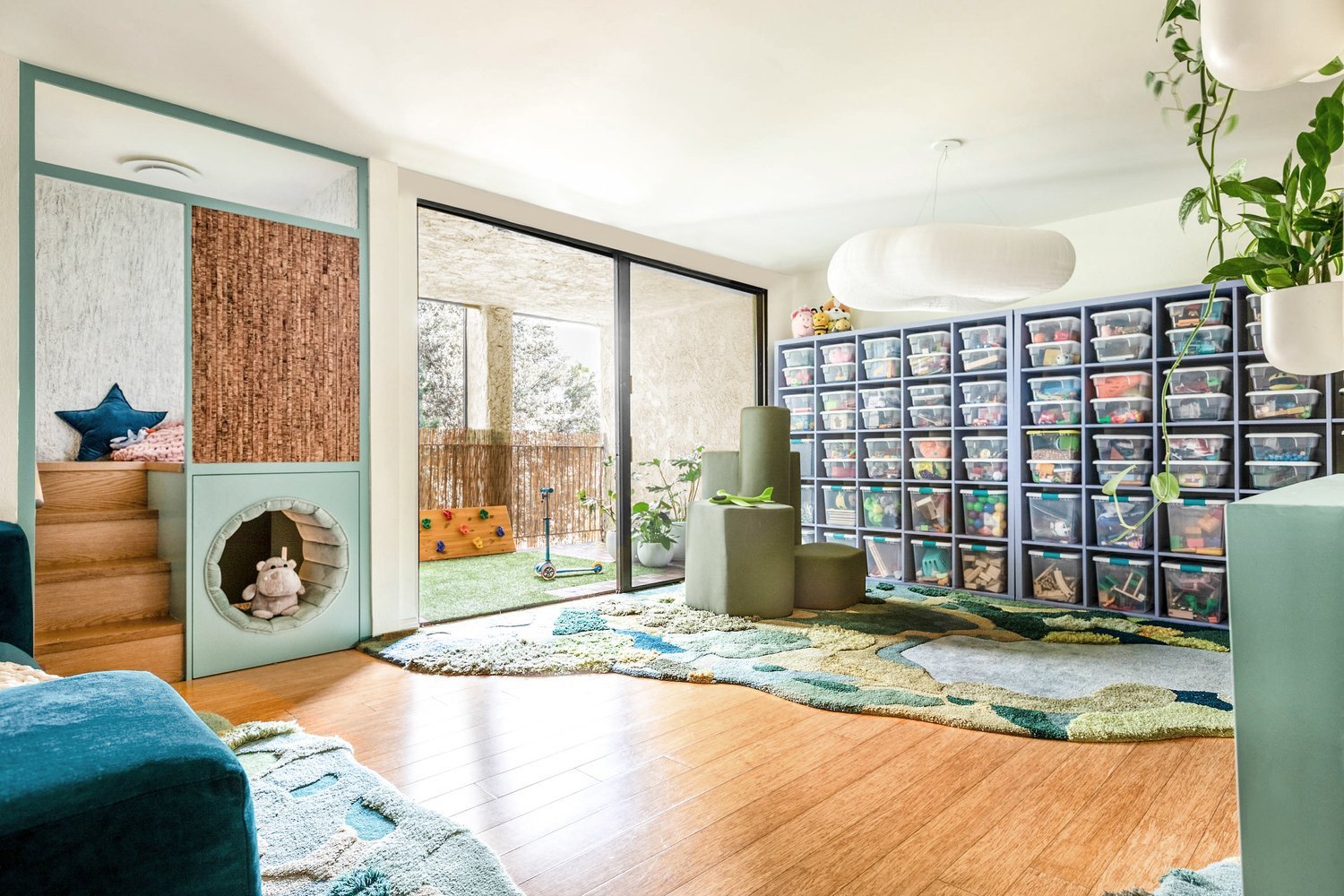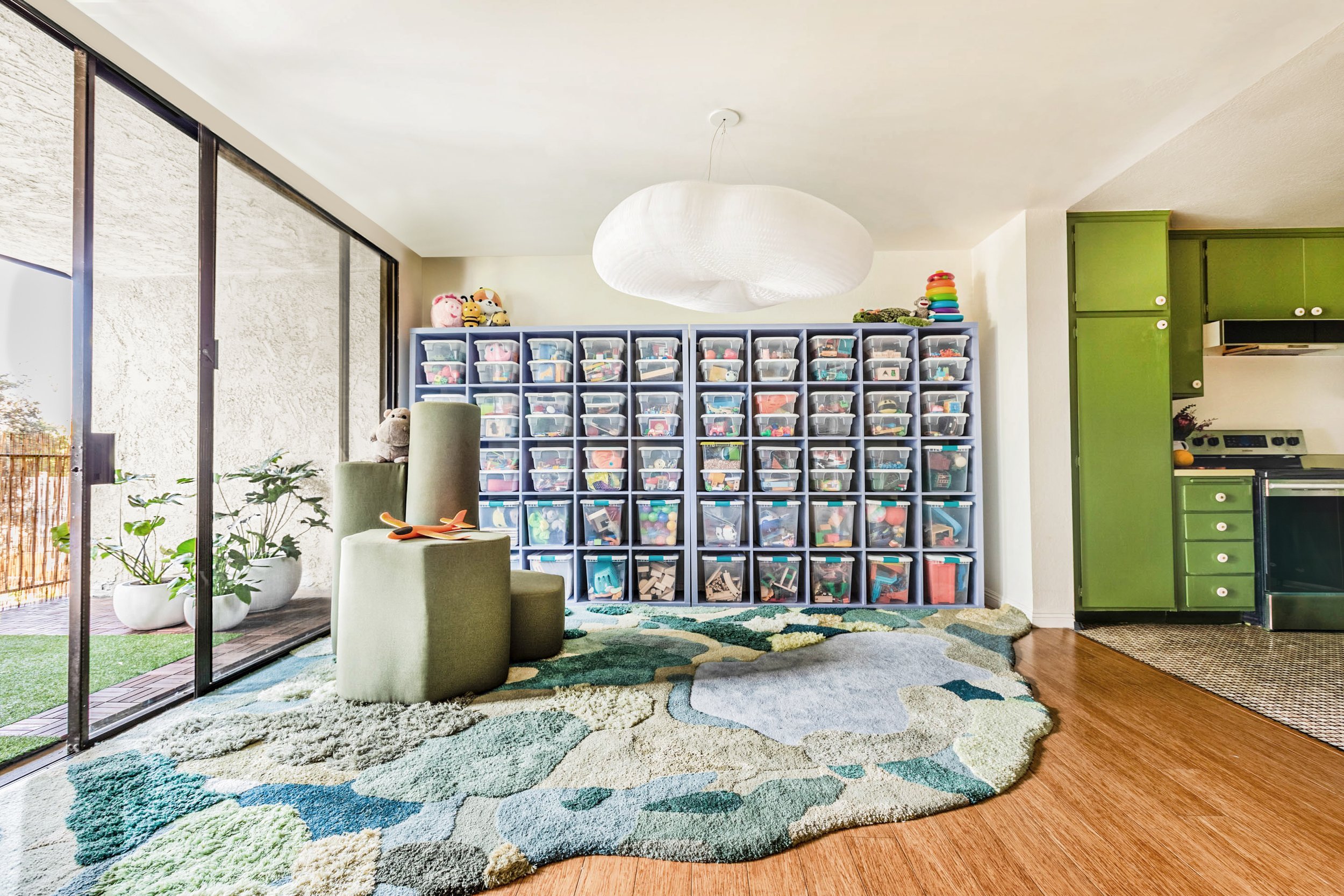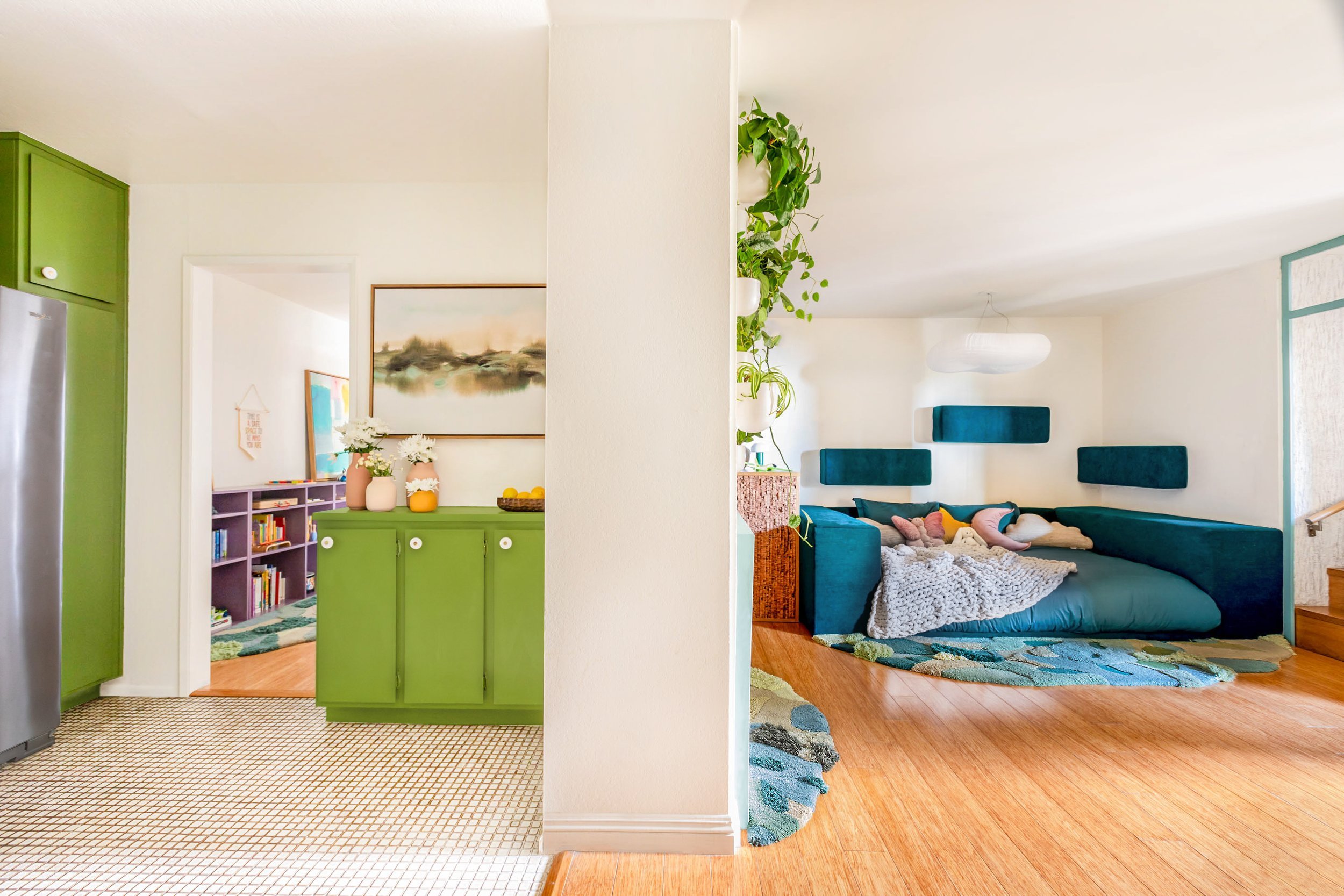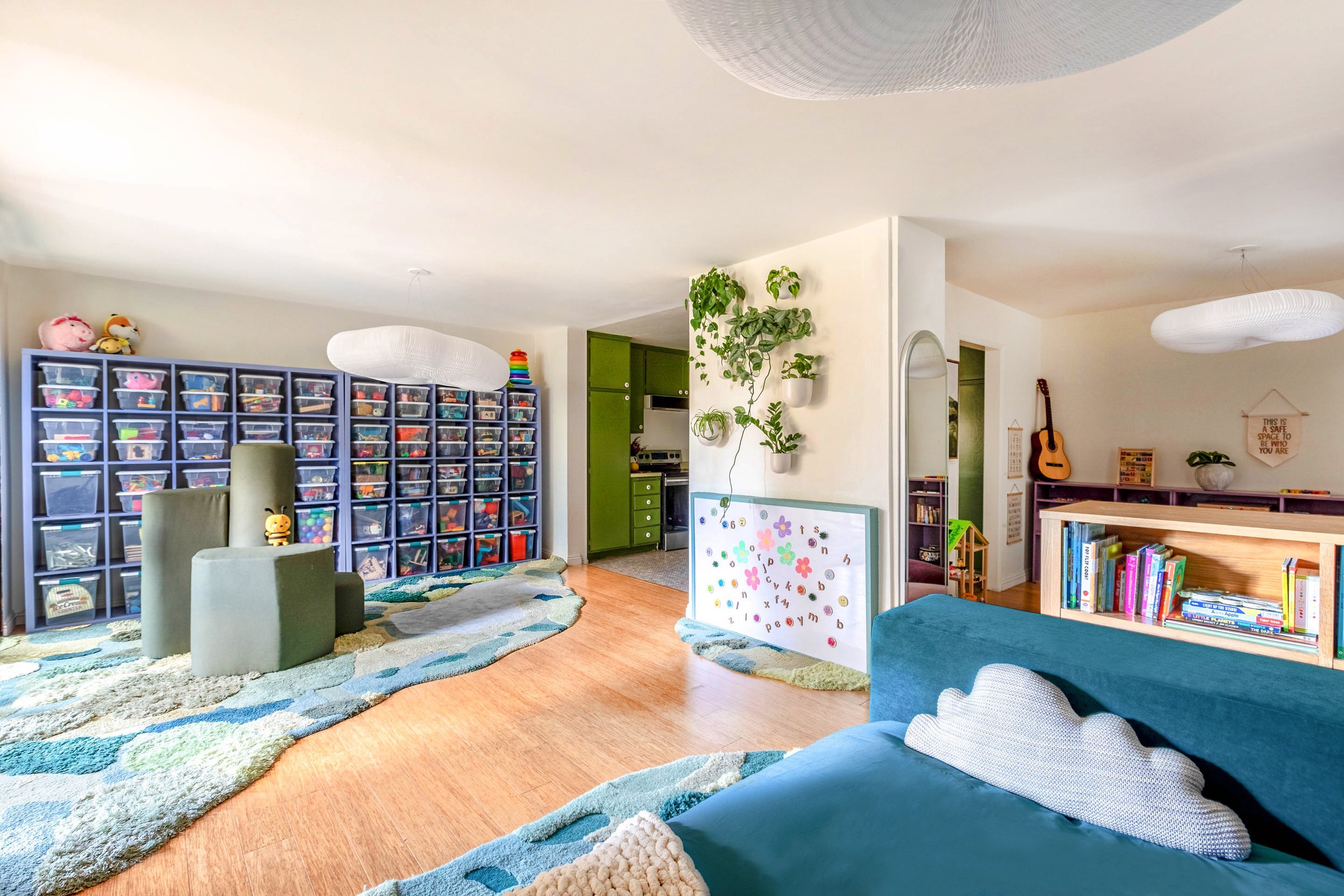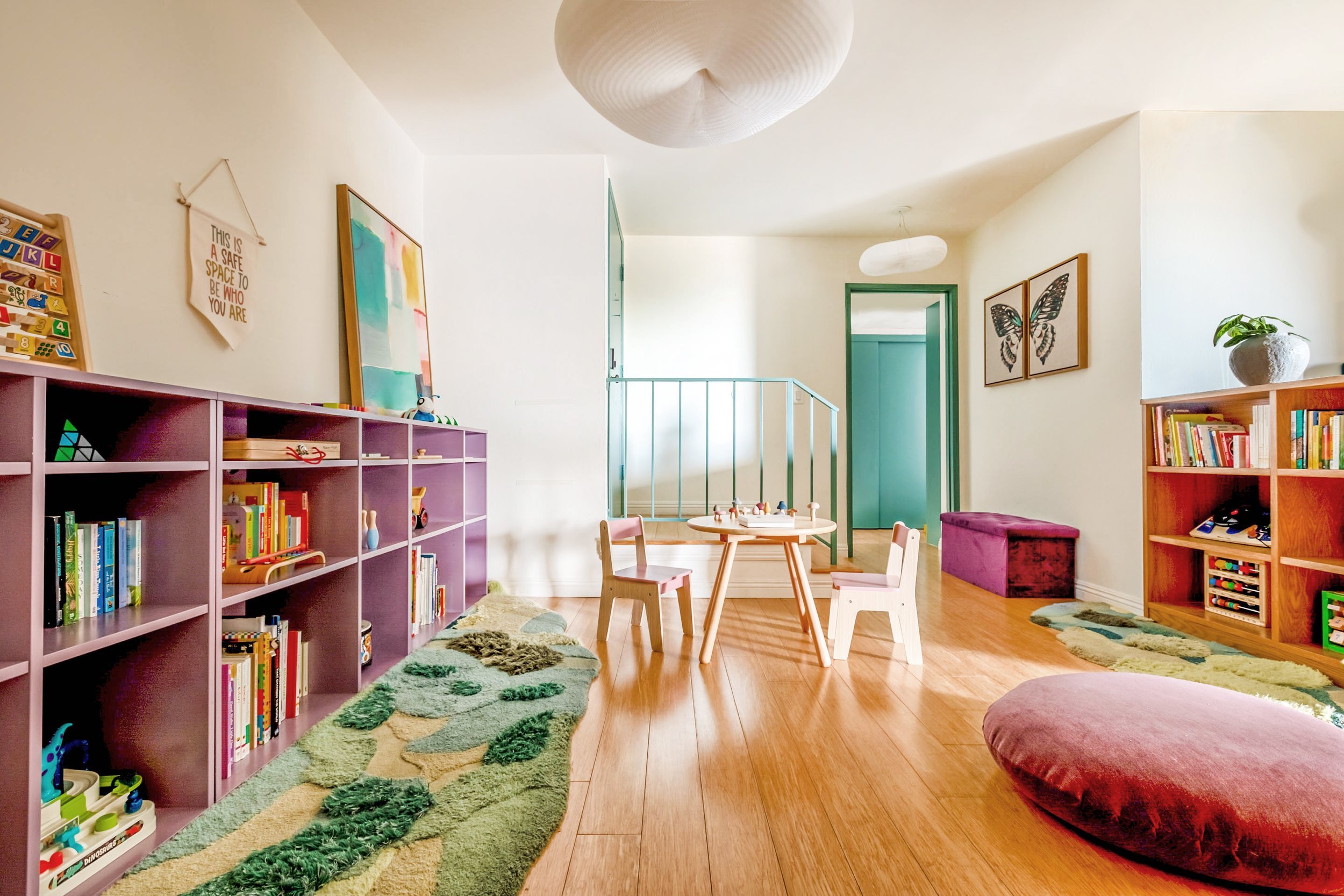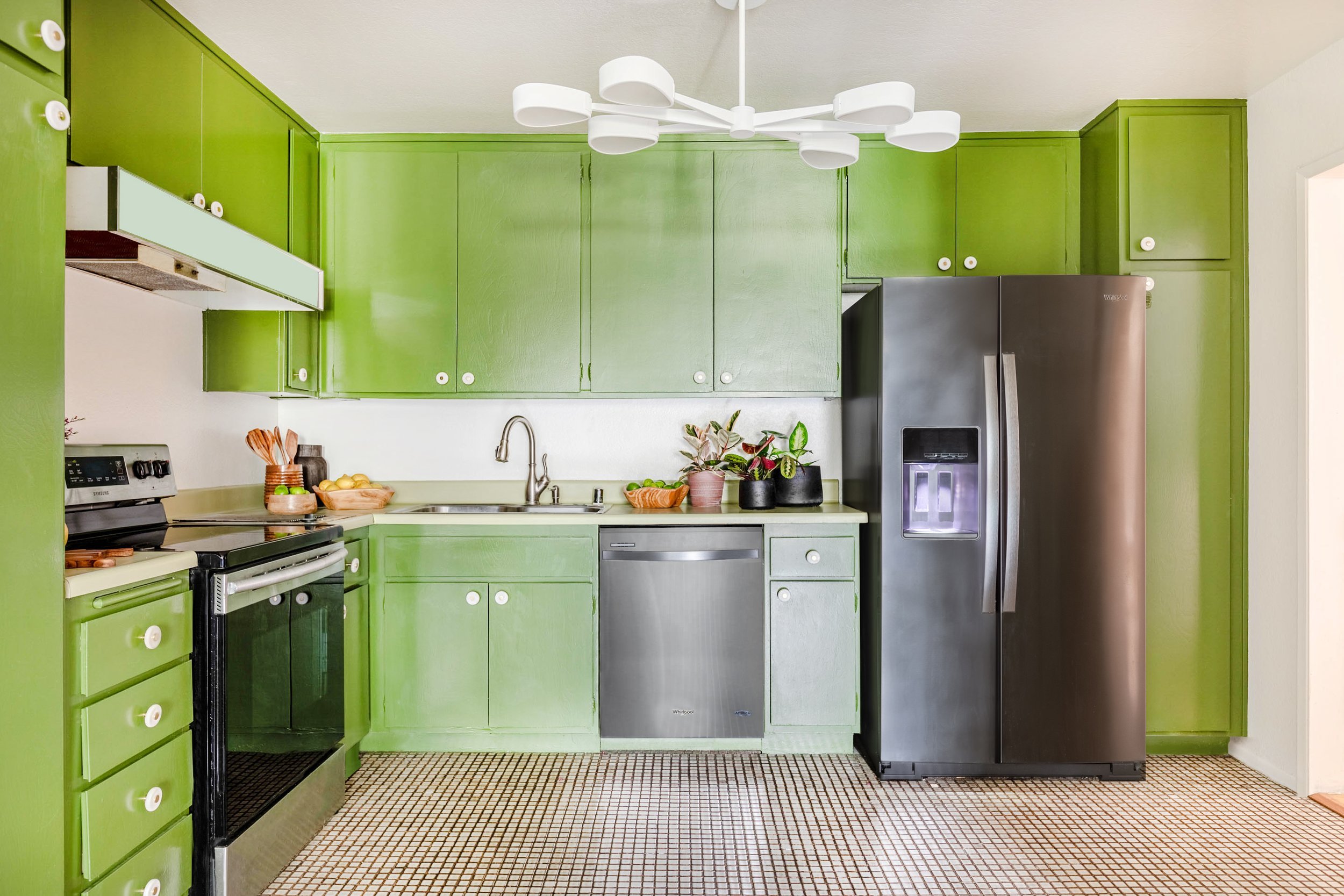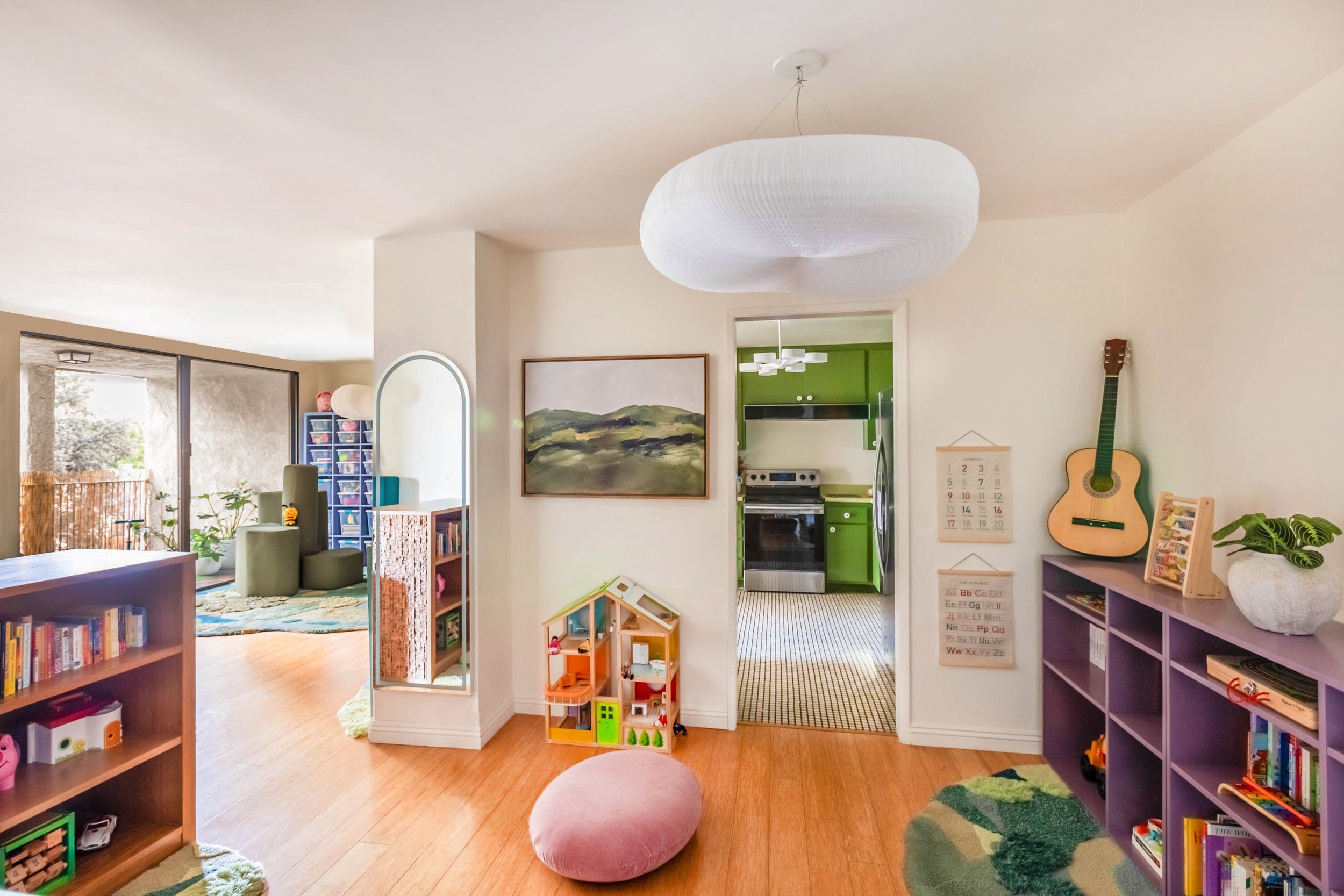
Wonderful For Imaginative Play, practical for Living. A letter from the parent of a child with autism.
I contacted Sarah last year after reading her thoughtful blog post titled “Creating a Safe Space for Neurodivergent Children to Thrive.” My 15 month old son had just been diagnosed with autism spectrum disorder. His days would now be filled with hours of intensive at-home therapies. Could we transform our home into a space that would support these therapies, yet be warm and comfortable and naturalistic?
Sarah and her team were excited about the challenge. We had ~400 square feet of my one-bedroom condo to work with.
She came to visit and we talked. I wanted everything. It had to provide a place to hide out, a sensory retreat. It had to have a running path, because my son loved to run. It had to have fixed and reconfigurable climbing options, because my son loved to climb. It had to have a treehouse with a slide, just because. It had to have a bed.
And of course, it had to promote therapy. Early intervention for autism is all about saturating children with attention and social interaction. The child, of course, would much rather be doing their own thing. Clinics facilitate this by putting the child and therapist into an 8 by 10 foot room with a rug in the middle. This way, they have no choice but to interact.
We had a conversation that went roughly like this:
“I want the same effect,” I told Sarah, “but without the walls.”
“Have you considered the possibility,” Sarah said, “that if we have a therapy area surrounded by all these fun options to run and climb and it looks like a natural setting that he will just.... run off?”
“Yes,” I said.
I had another thought. “He’ll also need easy access to 50 bins full of different toys. He’s at the general combination stage of presymbolic play.”
“I’ll have a mood board ready next week,” Sarah said.
The mood board was amazing. It looked like a collection of children’s museums, rich people’s houses, and gardens. I circled half of the items and said it would be great if our condo could look like that.
“I’ll have a design in a couple of weeks,” Sarah said.
Two weeks passed, and it was time to see the design. I prepared myself for disappointment, for being brought back down to Earth, because it was a list of requests impossible to satisfy. But then Sarah said, “I think we’ve got everything. Here’s how we did it.”
She opened up an AutoCAD file and went through the design. There were custom rugs laid out to create — in negative space — a running path along our hardwood floors. There were bookshelves and climbing shelves funneling inward to the bed, which now doubled as a crash pad. There were lily pads and rocks and modular climbing forms. There was a treehouse and a sensory cave carved out of our old laundry nook. A shelving system for therapy materials. The treehouse light looked like the sun, illuminating origami cloud lights hung around the room.
The largest cloud light hung low over the largest space on the rug, bordered on one side by the running path, on another side by the modular forms, and on another side by the shelving system.
“The therapy area,” I thought. “They’ll naturally sit and play here. The light is low-hanging enough that everyone has to be child level. There’s no walls, but it’s clear this is the best place to sit.”
There were other areas in the space too that were naturally conducive to one-on-one interactions. The sensory nook. The treehouse. The bed. The table by the library shelving. It was an entire space that encouraged adults to interact with children.
Over the next months, construction proceeded and the space became reality. Sarah’s team handled everything about the implementation, e.g. furniture delivery, getting contractors, etc. The end result was beautiful.
My son loves the space, and has thrived in it. It works just as designed. He engages happily with his therapists, working when he needs to, playing when he needs a break, and afterward it transforms happily into just his home. He improved rapidly over the next year, engaging more and more with others. It was a wonder to see his happy, social, and outgoing self emerge. At 26 months, he began to talk, and a few months later he overcame his speech delay entirely. It was due to the hard work of many people, himself included, and the space Sarah designed provided the stage for all this to happen. It was key.
There are companies that specialize in making rooms for autistic children. They look like therapy rooms — here’s the trampoline, here’s the lights, here’s the swing. They all look so clinical. Our space is every bit as functional, but it doesn’t look like a therapy clinic. It just looks like home.
One thing I love about the space is that everything is general purpose, nothing is prescribed. The climbing forms are my son’s taxi, battleship gun, car, boat, elevator, and many others. The padded areas next to the bed are a sofa, climbing area, book storage, toy stand, etc. It is wonderful for imaginative play, and very practical for living.
Everything is thoughtfully done. The color palette is amazing. My son loves the color green, and so shades of green are everywhere. When I added houseplants to the plant wall, I was startled to see that they matched the color palette. There are blues and purples around the room as well.
“The tricky part was finding something that would match the blue handles of the toy bins,” Sarah said.
“You considered that?!” I remember thinking.
Before I met Sarah, when I thought of high-end interior design, I thought of rich people’s houses that were cavernous and modern and museum-like, all shades of gray or beige broken up by expensive art. But our space didn’t turn out like that at all. Instead, it was vibrant and colorful and lovely and fun.
Comments from others: the parent of a nonverbal child came in and just said, it works. It’s funny how when you make a space totally focused on the child, it makes the parent happier too.
When my sister came to visit, her two kids were here along with my son, and all 3 kids were happily occupied in different areas of the space. My brother in law said, this makes it easy to watch all the kids at once, everyone is happy.
Another sentiment — it’s the roomiest 400 square feet in the world. Parents visiting the space often have larger houses, but have said they want a system more like ours, that has space for their children to play and all their toys too.
The design works for neurotypical children as well. They come in and are purely delighted. They don’t want to leave.
Working with Sarah was a wonderful experience. She is as much an engineer as she is an artist. She created something functional and beautiful. The intersection of those domains was something simple and elegant and clear. She turned something impossible into something that now seems inevitable and obviously correct — I couldn’t imagine it any other way now.
I appreciate that the process was conversational and collaborative. Before I met Sarah, I talked to two other people. One designer had the approach, “I look at your space, I make a design, and what you get is what you get.” Another wasn’t even an interior designer — she was a professional organizer — but was adamant that her way was the best, and kept telling me that she was right and I was wrong (e.g. “the books need to be displayed cover out, not spine out.” “but we have so many books.” “maybe you should have fewer books”).
In contrast, Sarah was much more experienced, knowledgeable, and proficient — but the way it came off was very different. She took the time to learn what we needed for my son, and understand on a deep level the “whys” behind what we were doing. Instead of saying “no” to any idea, she would guide me through the tradeoffs and constraints involved. There was never a sense of, “I’m more experienced, so this is the way things should be”; it was always more of a conversation, and very collaborative. Sarah didn’t just make it seem like she was powerful and capable — though she was, of course. She made me feel I was powerful and capable too, which is what I needed at a moment I was trying to do something right for my son.
A common pattern is that Sarah and I would have a brief conversation or email exchange, and a few days later, she would let me know of a solution. It was evident a great deal of thought and attention had been put into it. It gave a sense of infinite capability. Everything was also well organized and documented. It was amazing how quickly things could go from an idea to a concrete implementation. With Sarah, anything was possible.
Sarah Barnard, WELL AP + LEED AP, is a leading designer of personalized, sustainable spaces that support mental, physical, and emotional wellbeing. She creates highly personalized, restorative spaces that are deeply connected to art and the preservation of the environment. An advocate for consciousness, inclusivity, and compassion in the creative process, Sarah has appeared in Architectural Digest, Elle Décor, Vogue, HGTV, and many other publications. In 2017 Sarah was honored as a “Ones to Watch” Scholar by the American Society of Interior Designers (ASID).
Inclusive Playspace: Creating a Unique Sensory Environment for a Child with Autism
Thoughtful design can transform a home into a supportive and enriching environment, particularly for individuals with unique needs. This custom playspace, designed to support the sensory needs of a child with autism, naturally blends therapy and play into daily home life. Biophilic design elements such as a nature-inspired color palette, organic forms, and textures are utilized to create a visually stimulating child-oriented environment of diverse visual and sensorial experiences that create order within the space while also inspiring movement, play, and fun. These design features create visual and sensorial cues that help to create awareness of what is available to them within this environment, empowering them to make their own selections and choices for activity, play, and therapy, creating a space where they have autonomy, support, and space to thrive.
The main playroom is designed to present a series of visual and sensorial experiences that help facilitate one-on-one play-based therapies within the home, such as speech therapy, occupational therapy, infant stimulation therapy, and applied behavioral analysis (ABA) for a child with autism. Creating a child-oriented space that balances fun and order was essential in integrating therapy and play within the space. Color, texture, and lighting were thoughtfully designed to create a series of visual and sensorial cues that bring awareness of what is available within the space to a child with autism, empowering them to make their own selections and choices for activity based on their individual needs.
An inbuilt shelving system provides customized storage for various toys used in play-based therapies. Access to a wide variety of toys keeps a sense of novelty, and ample storage makes space for toys that are more complicated or contain many pieces, which can help build up play levels and skills during therapy. This storage creates an organized and clutter-free play space where toys can be chosen visibly and are easily accessible.
A nature-inspired palette of greens and blues throughout the main play space creates a visually stimulating environment. Stacked cork sheets from sustainably farmed cork provide warm accents on the treehouse and bookcase.
A custom rug made from wool and bamboo silk helps create a child-oriented space that naturally facilitates one-on-one floortime therapy and play by encouraging adults to play on the floor alongside children. The rugs incorporate biophilic design through a nature-inspired palette of green, grey, and blue patches that are woven into curved organic shapes resembling lichen or grass. This variation in texture contributes to a diverse sensory experience within the space designed to keep a child engaged with play and therapy.
A large cloud-like light hangs low within the room, demarcating a space on the rug at child height and helping facilitate one-on-one floortime play therapy. The height of this light creates a feeling of shelter and security under its soft, comforting canopy. The honeycombed paper they are made from also helps absorb reflected or sudden sound within the space. They create a fully dimmable soft glow from within their paper structure. Lighting controls are installed at a height accessible to children, and each light can be dimmed individually to determine the preferred lighting levels in the space.
The shape and placement of rugs throughout the space subtract parts of the wood flooring to help emphasize landing areas for therapy and play. This rug placement also creates a path of exposed flooring, which reveals a recreational running loop through the playroom, kitchen, and library, seamlessly incorporating a space for movement breaks between one-on-one play and therapy.
Modular, green climbing structures made from durable, commercial-grade textiles are incorporated into this play space. These textiles are durable, designed to withstand play, and sustainably sourced as they are made from 100% recycled poly, 75% of which is SEAQUAL fiber made from recycled ocean plastics. This material also contributes to healthier indoor air quality as it meets the Oeko-Tex standard 100, a rating that sets the benchmark for textile safety and certifies that this material contains no harmful substances. These soft forms offer opportunities for physical movement, enabling the child to climb and exercise their muscles. Additionally, they can rearrange the structures into various configurations during play, stimulating their imagination.
A custom-made bed was ergonomically designed to be low to the floor and suitable for child height to create a child-oriented space facilitating one-on-one play and therapy. A series of soft climbing shelves anchored to the wall give the bed a dual function as a soft landing during exercise and play.
A custom-made wipe-off magnet board creates a space for artistic expression and interactive play with magnets that picture different feelings and emotions. A series of plants installed on the wall above create a living green space that brings the serenity of nature into the playroom.
A custom indoor treehouse is split into upper and lower sections that present different textural and sensorial experiences so a child can independently choose from varied surroundings.
A circular padded doorway made from a durable indoor/outdoor textile serves as a child-sized chair and entrance to the downstairs nook of the treehouse. The child-sized doorway to this space doubles as an escape tunnel that connects with a parent's room next door. This option creates a sense of comfort and safety when interacting with therapists in the space, creating a retreat when breaks are needed. The smooth, dark green walls provide a pleasing sensorial contrast to the glass pebble tile floor made from recycled glass that mimics the look of Carrara marble.
The upstairs treehouse provides a space flooded with bright natural light, and the white walls feature a textured tree bark design. The window also provides a view of the trees outside, which can contribute to positive emotions and a sense of well-being.
A climbing ramp connects this custom-built indoor treehouse to the outdoor patio space, which, when used with adult supervision, incorporates the fresh air and sunlight of the outdoor environment into the main playroom.
Pink and lavender are incorporated into the library to distinguish this as an area designed for focused learning and therapy, separate from the blue and green main play space.
Bookshelves painted in a lavender hue provide accessible storage for toys and books, providing visual choice and making them easy to access for play, learning, and therapy.
Custom pink lily pad pillows made from a durable wool-acrylic blend and a custom rug crafted from wool and bamboo silk create a child-oriented space on the floor. This environment encourages one-on-one interactions and therapy, making it easy for adults to engage in activities on the floor.
The cabinetry of this kitchen was painted a lush nature-inspired green to visually connect with the existing countertops.
This contemporary five-light pendant chandelier provides bright, even lighting throughout the space. The round dandelion-like shape of its pendants works harmoniously with the chic white disc-shaped brass and marble hardware installed on the kitchen cabinetry.
This painting of an abstract landscape connects with this kitchen's nature-inspired color palette to bring the beauty of the natural world into the space.
Designing a space that blends therapy and play at home can have immense benefits for a child with autism. Being surrounded by visual and sensorial experiences that create freedom of choice and autonomy creates an at-home environment that meets them where they are, supports their individual needs, and encourages them to learn, grow, and thrive.
Sarah Barnard, WELL AP + LEED AP, is a leading designer of personalized, sustainable spaces that support mental, physical, and emotional wellbeing. She creates highly personalized, restorative spaces that are deeply connected to art and the preservation of the environment. An advocate for consciousness, inclusivity, and compassion in the creative process, Sarah has appeared in Architectural Digest, Elle Décor, Vogue, HGTV, and many other publications. In 2017 Sarah was honored as a “Ones to Watch” Scholar by the American Society of Interior Designers (ASID).





